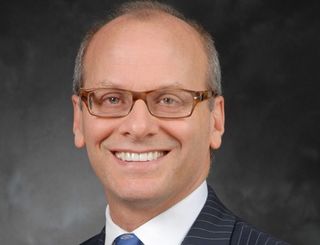Scripps’ Corner of Ad Market Leads Comeback

The television advertising business has become a bit of a fixer-upper, with low ratings and competition from online and mobile hurting its curb appeal.
One neighborhood showing signs of gentrification is Scripps Networks Interactive, whose HGTV and Food Network are following a unique blueprint that is bringing in viewers advertisers are willing to pay more to reach.
After several quarters of gloom and doom, most media companies are saying the ad market is strengthening. Jon Steinlauf, president of ad sales for Scripps, says, “this has been the best three-or four-month stretch we’ve had in a long time. Something turned. Something really turned around upfront time for us.” Total ad revenue rose 1% in the second quarter to $502.9 million.
But Steinlauf says this ad recovery is not taking place at the same rate industry-wide and that Scripps—a relatively small player that has traditionally been on the high side in terms of volume and pricing growth—is seeing its share of spending increasing.
While cable’s sales volume in the upfront was down for a second-straight year, Scripps’ volume was up in the mid-to-high-single-digit range with prices on a cost per thousand (CPM) viewers basis up in the low-to-mid-single digits.
Steinlauf says that as the beginning of the season neared, advertisers tried to increase their upfront spending, despite the stock market pullback that hammered media stocks. Advertising rates are now higher in the scatter market. “The people who bought us upfront definitely did well for themselves,” he says.
What made Scripps stand out? For one thing, there’s that data everyone is talking about. While some networks have turned data into a talking point and buzzword, advertisers and ad agencies have been able to use data on what households are watching and what those same households are buying.
Broadcasting & Cable Newsletter
The smarter way to stay on top of broadcasting and cable industry. Sign up below
With that information at clients’ fingertips, “the best-performing advertising will grow share and the worst-performing advertising will lose share,” Steinlauf says.
That’s good for Scripps because the data is supporting what it has long claimed—that its brand of lifestyle programming engages viewers, especially upscale women, and helps persuade them to buy the products being advertised. “It’s come all the way to the point where now we can monetize the relationship we have with our audience in a way maybe that others can’t and in a way we weren’t able to fully in the past,” Steinlauf says.
A reason why ads deliver on Scripps networks is because there’s a lot of live viewing. That means ads seen when advertisers want them to be seen, not three days later, seven days later or longer.
Steinlauf won’t name names, but he says one advertiser went from spending zero on Scripps in the 2014-15 upfront to “double-digit millions” in the 2015-16 upfront.
“They felt they had shifted too much of their spending to digital a couple of upfronts and they were gradually easing some of that shift back over to TV,” he says. “They were spending a lot of time looking at data on TV channels for their brands to try to determine where the ROI on TV was going to be the best. From all of that analysis, double-digit millions came to us.”
A lot of Scripps’ healthy outlook is coming from the pharmaceutical industry, which has a large number of prescription drugs coming to the market. Steinlauf expects Scripps’ pharmaceutical sales in the second half of this year to be triple what they were in the second half of 2014.
Scripps is benefitting because pharmaceutical marketers in particular, and marketers in general, are creating different media strategies depending on the age of their target consumer.
“A lot of clients are saying, ‘I’m going to have a strategy for 35-plus that’s going to include a lot of TV and I’m going to have a strategy for 34-minus that might not have a lot of TV depending on the situation,” Steinlauf says. Again, that benefits Scripps, whose networks attract older, but more affluent, audiences.
Some advertisers aiming at older consumers are even paying for eyeballs outside of the traditional 25-54 demos. “Maybe 10% of our ad guarantees have a 64 on the right side of the hyphen,” Steinlauf says.
Jon has been business editor of Broadcasting+Cable since 2010. He focuses on revenue-generating activities, including advertising and distribution, as well as executive intrigue and merger and acquisition activity. Just about any story is fair game, if a dollar sign can make its way into the article. Before B+C, Jon covered the industry for TVWeek, Cable World, Electronic Media, Advertising Age and The New York Post. A native New Yorker, Jon is hiding in plain sight in the suburbs of Chicago.

